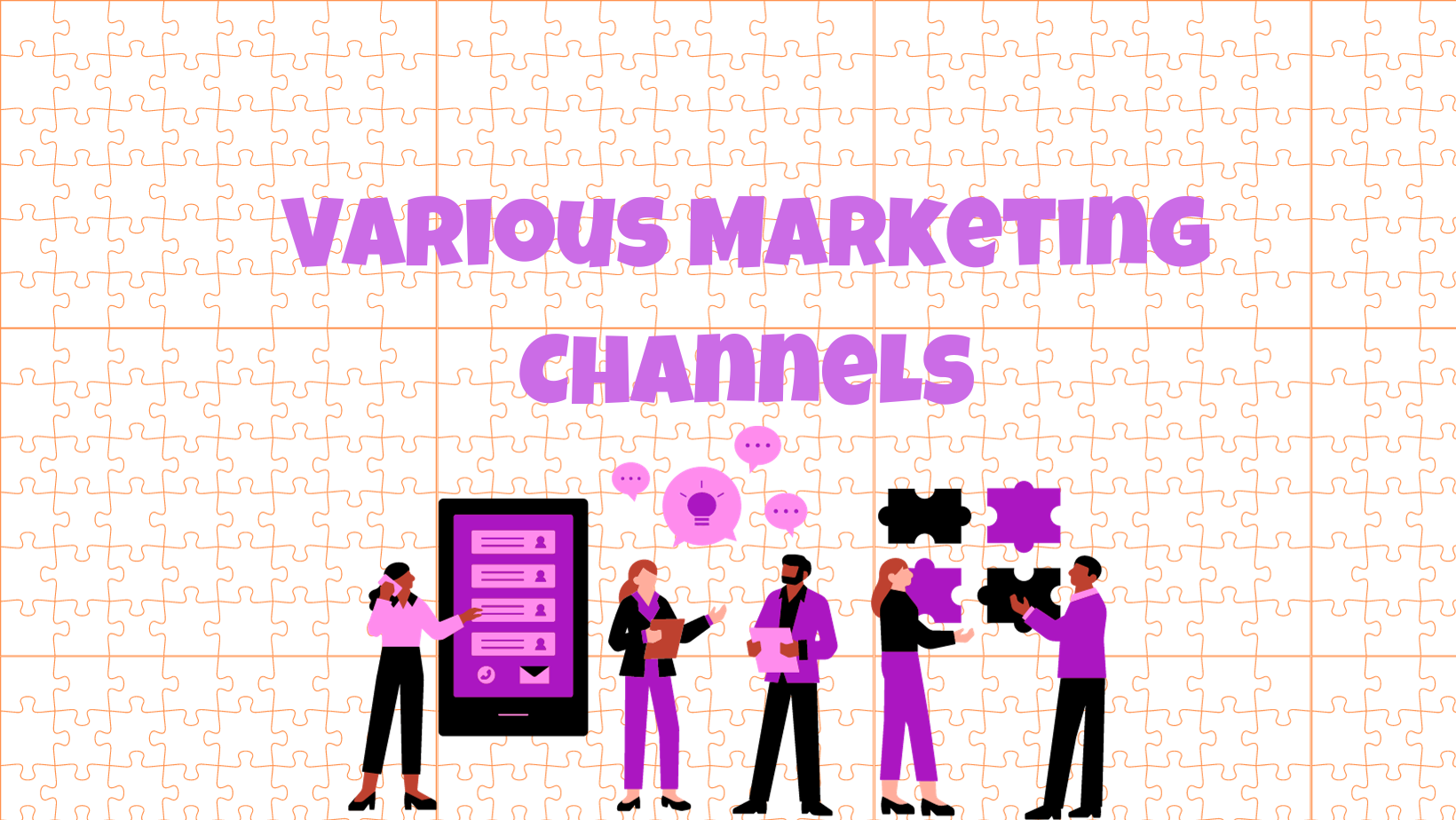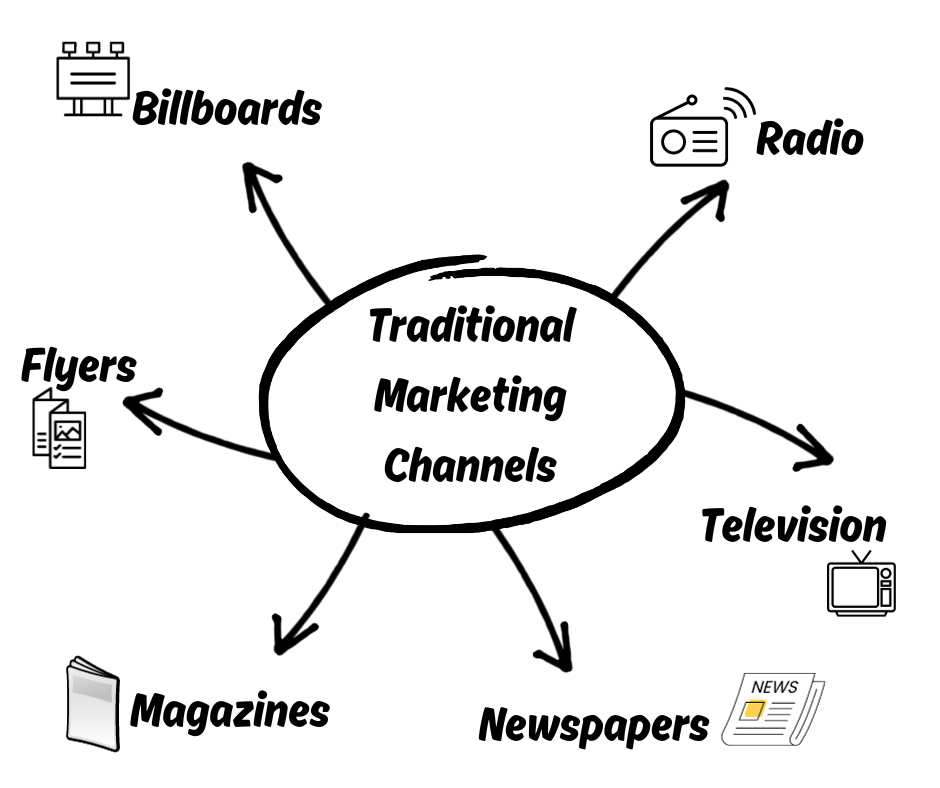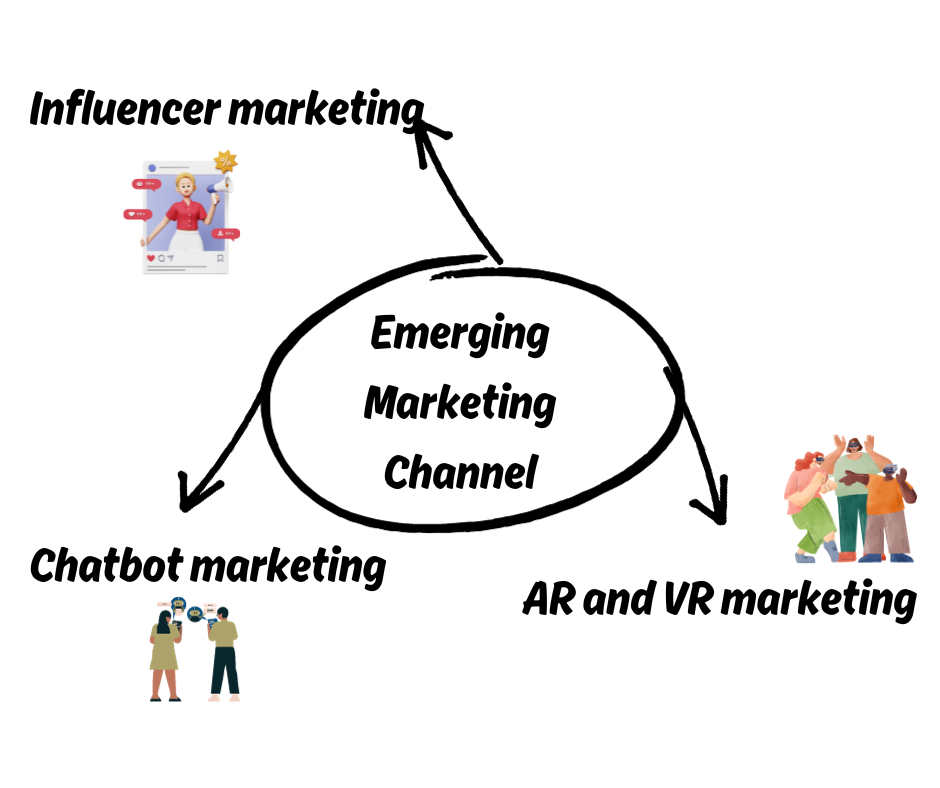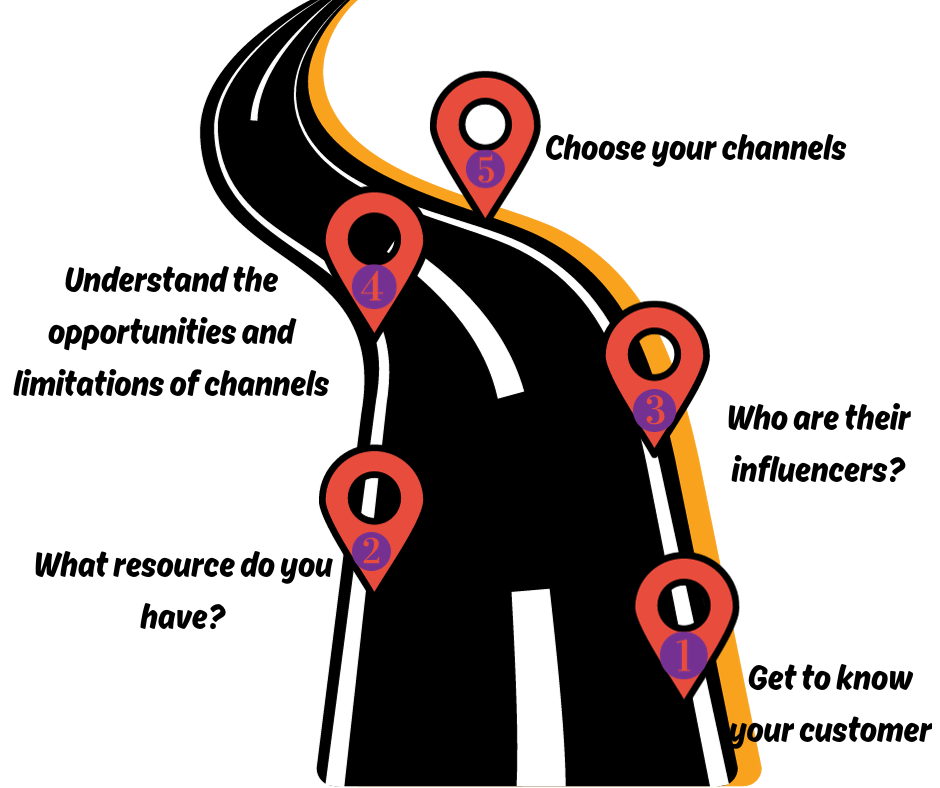Marketing channels are how businesses communicate with their customers. They serve as a bridge between producers and consumers, providing tools, strategies, platforms, and methods to reach out and connect with potential buyers.
Marketing channels are essential for any business, as they are the primary means by which brands can convey their message and offerings to customers.

Without marketing channels, it would be nearly impossible to connect with customers and promote products or services.
They are, therefore, an essential component of the business cycle and must be carefully considered and optimized to ensure maximum outreach and engagement. Let us have a deeper look at Various Marketing Channels.
Page Contents:
Traditional Marketing Channels
Traditional marketing channels are offline channels like, print media, cutouts, hoardings billboards, etc. For many decades, businesses have relied on various traditional marketing channels to promote their products and services.
1. Print media
Print media is still a popular choice for businesses to advertise as it allows them to reach a wide range of people who are not digitally connected. Print media refers to any form of mass communication that is printed on a physical medium, such as newspapers, magazines, brochures, flyers, books, and billboards.
2. Radio and television advertising
Radio and television advertising are also popular channels, as they enable businesses to reach a large audience across different demographics. This type of advertising is effective in creating brand awareness and promoting products and services to a larger audience.

3. Billboards and outdoor advertising
Billboards and outdoor advertising, such as posters and banners, are also commonly used to grab the attention of potential customers. These channels are particularly effective in high-traffic areas and can help businesses reach new customers who might not be aware of their products or services.
Despite the rise of digital marketing, many companies still rely on these traditional channels to reach their target audience, as they can be more accessible and cost-effective for smaller businesses.
Digital Marketing Channels
The world of digital marketing is vast and constantly evolving, offering businesses a variety of channels to reach their target audience. each of these digital marketing channels offers unique strengths and weaknesses, and businesses must evaluate their marketing goals and target audience to determine which channels to use
1. Search Engine Optimization (SEO)
One of the most effective channels is search engine optimization (SEO), which involves optimizing a website’s content and structure to improve its ranking in search engine results. By using relevant keywords and creating high-quality content, businesses can increase their visibility and attract more organic traffic to their website.
2. Paid Search Advertising (PPC)
Another popular channel is paid search advertising (PPC), which involves placing ads on search engines and paying each time a user clicks on them. This can be a highly effective way to drive traffic to a website and increase sales, especially for businesses in competitive industries.
3. Social Media Marketing
Social media marketing is another powerful channel that enables businesses to engage with potential customers on social media platforms. By creating compelling content and building a strong social media presence, businesses can reach a wider audience and build brand awareness.
Social media platforms also provide opportunities for businesses to interact with customers in real time, answering questions, and providing support.
4. Email Marketing
Email marketing is another tried-and-tested channel that involves sending emails to a targeted audience to promote products or services, build brand awareness, and encourage customer loyalty. By using personalized and relevant content, businesses can keep their customers engaged and informed about new products, services, and promotions.
Emerging Marketing Channel
In the world of marketing, there are always new channels emerging that businesses can leverage to reach their target audience. Some of the latest and most promising channels include influencer marketing, chatbot marketing, augmented reality (AR), and virtual reality (VR) marketing.
1. Influencer marketing
Influencer marketing involves partnering with individuals who have a large following on social media platforms to promote your brand or products. This can be a highly effective way to reach a specific audience and build trust with potential customers.

2. Chatbot marketing
Chatbot marketing involves creating interactive chatbots that can have conversations with customers and provide them with information, guidance, and support. Chatbots are becoming increasingly popular as they can provide 24/7 customer service and streamline communication between businesses and customers.
3. AR and VR marketing
AR and VR marketing use immersive technologies to create unique and engaging experiences for customers. AR lets customers interact with virtual objects in the real world, while VR creates completely virtual environments. These technologies can be used to showcase products, provide virtual tours, and create interactive ads that capture customers’ attention.
Choosing the Right Marketing Channels
Effective marketing relies heavily on selecting the right channels to reach your target audience. To start with, it is important to have a clear understanding of the audience you are targeting.
This requires conducting thorough market research to identify their demographics, interests, and behaviors, among other factors. Once you have a clear picture of your target audience, you can then evaluate your budget and resources to determine which marketing channels are feasible for your business.
There are several marketing channels to consider, including social media, email marketing, search engine optimization (SEO), content marketing, and paid advertising, among others.

Each channel has its unique advantages and disadvantages, and the key is to identify which channels are most likely to resonate with your target audience.
For example, if your target audience is primarily active on social media, then you may want to focus your efforts on creating engaging social media content and running targeted ad campaigns on those platforms.
To measure the success of your marketing efforts, it is essential to track key metrics such as website traffic, social media engagement, conversion rates, and customer feedback.
This will enable you to identify which channels are delivering the best results and adjust your strategy accordingly.
Additionally, it is important to continually evaluate your marketing efforts to ensure that you are staying up-to-date with industry trends and incorporating feedback from your customers.
By doing so, you can optimize your marketing strategy and achieve better results over time.
Future outlook on marketing channels
As we continue to witness rapid advancements in technology, the future of marketing channels looks brighter than ever before.
With digital platforms constantly evolving, businesses now have a plethora of opportunities to reach their target audience through various channels such as social media, email, video marketing, search engine optimization, and more.
These channels have proven to be highly effective in driving traffic, generating leads, and increasing conversions for businesses of all sizes.
Furthermore, the use of artificial intelligence and machine learning algorithms is expected to play a significant role in the future of marketing.
These technologies have the potential to revolutionize the way businesses interact with their customers and create personalized experiences.
By leveraging the power of AI, businesses can analyze customer behavior and preferences in real time and use this data to create targeted marketing campaigns that resonate with their audience.
As the marketing landscape continues to evolve, businesses must stay abreast of the latest trends and technologies to remain competitive.
With the rise of new platforms and the increasing adoption of digital channels, businesses that fail to adapt risk getting left behind. Therefore, it’s important to stay up-to-date with the latest marketing strategies and technologies to ensure that your business stays ahead of the curve.